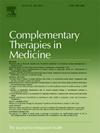A systematic review and meta-analysis of acupuncture's impact on hemiplegic gait recovery after stroke
IF 3.5
3区 医学
Q1 INTEGRATIVE & COMPLEMENTARY MEDICINE
引用次数: 0
Abstract
Objective
This systematic review aims to evaluate the efficacy and safety of acupuncture in alleviating gait disturbances in post-stroke hemiplegia, focusing on various gait parameters.
Methods
A comprehensive search was conducted across PubMed, EMBASE, Cochrane Library, Web of Science, AMED, CINAHL, CBM, CNKI, and WanFang databases to identify relevant randomized controlled trials (RCTs). The included studies were independently evaluated for risk of bias using Cochrane's risk of bias tool. RevMan 5.3 was used for meta-analysis, and adverse events were collected through full-text review.
Results
A total of 21 RCTs involving 1463 participants were included. Results showed that acupuncture combined with rehabilitation therapy (RT) significantly improved stride and step length (MD = 7.79, 95 % CI: 5.62–9.96, Z = 7.03, P < 0.00001, I² = 72 %), cadence (MD = 10.43, 95 % CI: 6.22–14.65, Z = 4.85, P < 0.00001, I² = 95 %), walking speed (MD = 12.27, 95 % CI: 9.22–15.31, Z = 7.90, P < 0.00001, I² = 91 %), hip peak flexion angle (MD = 2.71, 95 % CI: 0.94–4.49, Z = 2.99, P = 0.003, I² = 82 %), and ankle peak plantarflexion angle (MD = 2.08, 95 % CI: 1.11–3.06, Z = 4.19, P < 0.0001, I² = 0 %) compared to RT alone. It also reduced gait cycle time (MD = −0.61, 95 % CI: −0.96 to −0.26, Z = 3.44, P = 0.0006, I² = 98 %) and the proportion of double support phase (MD = −7.16, 95 % CI: −9.08 to −5.25, Z = 7.33, P < 0.00001, I² = 0 %). These improvements in gait parameters suggest enhanced mobility and functional independence for post-stroke patients. However, heterogeneity in participant characteristics and study methodologies was noted, such as variations in stroke types, curses, severity, and acupuncture protocols. The majority of RCTs exhibited moderate to high risk of bias regarding allocation concealment and blinding. Only two RCTs reported no adverse events, while the rest 19 studies did not mention adverse events.
Conclusion
Acupuncture appears to enhance specific aspects of hemiplegic gait, though further high-quality research is needed to fully validate its effects. Current evidence is limited by methodological weaknesses and potential biases in the included studies. Rigorous, well designed studies are needed to further validate the comprehensive effects of acupuncture on post-stroke hemiplegic gait.
针灸对中风后偏瘫步态恢复影响的系统回顾和荟萃分析
目的本系统综述旨在评价针刺缓解脑卒中后偏瘫患者步态障碍的有效性和安全性,重点关注不同的步态参数。方法综合检索PubMed、EMBASE、Cochrane Library、Web of Science、AMED、CINAHL、CBM、CNKI、万方等数据库,筛选相关随机对照试验(rct)。纳入的研究使用Cochrane的偏倚风险工具独立评估偏倚风险。采用RevMan 5.3进行meta分析,通过全文综述收集不良事件。结果共纳入21项随机对照试验,受试者1463人。结果表明,针灸结合康复治疗(RT)显著提高步幅和步长(MD = 7.79, 95 % CI: 5.62 - -9.96, Z = 7.03,P & lt; 0.00001,我²= 72 %),节奏(MD = 10.43, 95 % CI: 6.22 - -14.65, Z = 4.85,P & lt; 0.00001,我²= 95 %),步行速度(MD = 12.27, 95 % CI: 9.22 - -15.31, Z = 7.90,P & lt; 0.00001,我²= 91 %),臀部弯曲角峰值(MD = 2.71, 95 % CI:0.94 - -4.49, Z = 2.99,P = 0.003,我²= 82 %),和脚踝峰值plantarflexion角(MD = 2.08, 95 % CI: 1.11 - -3.06, Z = 4.19,P & lt; 0.0001,我²= 0 %)相比,RT孤单。它还减少步态周期时间(MD =−0.61,95 % CI: 0.96−−0.26,Z = 3.44,P = 0.0006,我²= 98 %)和双支撑阶段的比例(MD =−7.16,95 % CI: 9.08−−5.25,Z = 7.33,P & lt; 0.00001,我²= 0 %)。这些步态参数的改善表明卒中后患者的活动能力和功能独立性增强。然而,注意到参与者特征和研究方法的异质性,例如中风类型,诅咒,严重程度和针灸方案的差异。大多数随机对照试验在分配、隐藏和盲法方面表现出中度至高度的偏倚风险。只有两项随机对照试验报告没有不良事件,而其余19项研究没有提到不良事件。结论针灸似乎可以改善偏瘫步态的某些方面,但需要进一步的高质量研究来充分验证其效果。目前的证据受到纳入研究的方法学缺陷和潜在偏差的限制。需要严谨、精心设计的研究来进一步验证针灸对中风后偏瘫步态的综合影响。
本文章由计算机程序翻译,如有差异,请以英文原文为准。
求助全文
约1分钟内获得全文
求助全文
来源期刊

Complementary therapies in medicine
医学-全科医学与补充医学
CiteScore
8.60
自引率
2.80%
发文量
101
审稿时长
112 days
期刊介绍:
Complementary Therapies in Medicine is an international, peer-reviewed journal that has considerable appeal to anyone who seeks objective and critical information on complementary therapies or who wishes to deepen their understanding of these approaches. It will be of particular interest to healthcare practitioners including family practitioners, complementary therapists, nurses, and physiotherapists; to academics including social scientists and CAM researchers; to healthcare managers; and to patients. Complementary Therapies in Medicine aims to publish valid, relevant and rigorous research and serious discussion articles with the main purpose of improving healthcare.
 求助内容:
求助内容: 应助结果提醒方式:
应助结果提醒方式:


